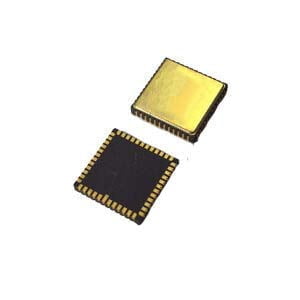A ring laser gyroscope (RLG) is an advanced navigation device that uses the principles of laser physics to detect and measure angular motion. This technology has revolutionized navigation systems, and it is now used in various applications, such as in aircraft, satellites, and even submarines.
While the first experimental ring laser gyroscope was demonstrated in the US by Macek and Davis in 1963, the very first usable gyrocompass goes back as far as 1904 and was invented by German inventor Hermann Anschütz-Kaempfe. Gyroscopes have advanced significantly over time, transitioning from mechanical technology to self-contained optical laser technology like the Honeywell Ring Laser Gyroscope (RLG).
What is a Ring Laser Gyroscope?
A ring laser gyroscope is a device that measures angular velocity using the Sagnac effect. The Sagnac effect is a phenomenon where the phase of light changes as it travels through a rotating medium. The device is constructed using a ring-shaped optical cavity with mirrors at each end. The ring cavity is filled with a laser medium, which generates a beam of coherent light that circulates inside the cavity. The beams are then split into two counter-propagating beams, which travel in opposite directions along the ring. The counter-propagating beams interfere with each other, creating a pattern of interference fringes. Compared to conventional spinning gyroscopes, which rely on a spinning rotor to detect changes in orientation, RLGs are generally more accurate, faster, and more reliable. This is because they have no moving parts and are not subject to the same mechanical wear and tear as spinning gyroscopes. They also have a wider dynamic range and are less affected by external vibrations and other disturbances.
Ring laser gyroscopes for inertial navigation
Ring laser gyroscopes are advantageous for inertial navigation systems (INS) due to their lightweight, compact, and self-contained design, which eliminates friction and prevents extra drag in the system. The latest models are significantly smaller, making them ideal for applications where accuracy, reliability, and efficient use of space are critical.
INS are used for guidance in ships, spacecraft, aircraft, and missiles, especially in environments where GPS technology is not feasible. Aerial navigation primarily employs two types of INS: stabilized platform INS and strap-down INS.
Stabilized platform INS feature three or more accelerometers and gimballed spinning mass gyros that maintain platform alignment and stability while the aircraft is in motion.
Strap-down INS also contain accelerometers and gyroscopes, including RLGs, which are secured to the frame of the aircraft, eliminating the need for gimbals used in stabilized platform INS and their associated reliability issues.
Ring laser gyroscopes for transportation systems
Due to their distinct characteristics, ring laser gyroscopes are increasingly becoming a focal point in the transportation systems industry. Ring laser gyroscopes are characterized by their small size, compactness, lightweight construction, and radiation resistance. Although they have primarily been utilized in air and space vehicles, there is a rising trend in incorporating them into other modes of transportation, particularly inertial navigation systems, leading to a faster expansion of the gyroscope market than ever before.
Due to their superior accuracy and performance stability, ring laser gyros are also extensively used in military operations, specifically in missile navigation, but also in military aircraft and ground vehicles.
Today, Honeywell's GG1320 digital RLG is the industry standard for precision rotation measurement. It is an affordable, high-performance inertial sensor with the electronics, power supply and sense element packaged into an easy-to-use compact unit. It provides an output of the compensated measured rotation in a digital data stream.
Apart from ring laser gyros (RLG), Honeywell gyro technologies include, fiber-optic gyros (FOGS) and micro-electro-mechanical systems (MEMS) gyros.
More Technical Questions
1.How accurate is MEMS gyroscope?
2.Where are MEMS Gyroscopes Used?
4.What is INS and How does it Work?
5.Differences between IMU, AHRS, VRU and INS
Products in Article







